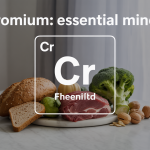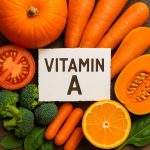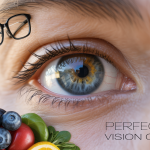Understanding Vitamin E: Your Body’s Essential Antioxidant
Vitamin E acts as a powerful shield for your cells, protecting them from damage while supporting your immune system and overall health. This guide is perfect for health-conscious individuals, parents planning family nutrition, and anyone curious about optimizing their vitamin intake through natural sources.
We’ll explore how vitamin E works in your body and why it’s so important for your daily health. You’ll discover the best foods to eat for natural vitamin E, from nuts and seeds to leafy greens. We’ll also break down exactly how much you need each day and what happens when you don’t get enough of this vital nutrient.
Essential Functions of Vitamin E in Your Body

Powerful Antioxidant Protection Against Cell Damage
Vitamin E acts as your body’s primary fat-soluble antioxidant, working like a cellular bodyguard that protects your cells from harmful free radicals. These unstable molecules can damage cell membranes, proteins, and DNA through a process called oxidative stress. When free radicals attack your cells, vitamin E steps in and neutralizes them before they can cause serious damage.
The antioxidant power of vitamin E is particularly important for protecting cell membranes, which are made up of fatty acids that are especially vulnerable to oxidation. By embedding itself directly into these membranes, vitamin E creates a protective barrier that maintains cellular integrity and prevents the chain reactions that lead to widespread cellular damage.
Your body faces constant exposure to free radicals from pollution, UV radiation, cigarette smoke, and even normal metabolic processes. Without adequate vitamin E protection, these oxidative forces would quickly overwhelm your cellular defenses, leading to premature aging and increased disease risk.
Immune System Strengthening Benefits
Vitamin E plays a crucial role in keeping your immune system running at peak performance. This nutrient directly supports the function of T-cells, which are your body’s specialized immune cells responsible for identifying and destroying harmful invaders like viruses and bacteria.
Research shows that adequate vitamin E levels help maintain the integrity of immune cell membranes, allowing these cells to communicate effectively and mount appropriate responses to threats. People with low vitamin E levels often experience weakened immune responses and increased susceptibility to infections.
The immune-boosting effects of vitamin E become even more important as you age. Older adults who maintain optimal vitamin E levels show better vaccine responses and reduced rates of respiratory infections compared to those with deficiencies. This vitamin also helps regulate inflammatory responses, preventing your immune system from overreacting and causing unnecessary tissue damage.
Heart and Cardiovascular Health Support
Your cardiovascular system benefits significantly from vitamin E’s protective effects. This nutrient helps prevent the oxidation of LDL cholesterol, often called “bad” cholesterol. When LDL cholesterol becomes oxidized, it’s more likely to stick to artery walls and form dangerous plaques that can lead to heart disease and stroke.
Vitamin E also supports healthy blood vessel function by protecting the delicate endothelial cells that line your arteries. These cells play a vital role in regulating blood pressure and blood flow. When they’re damaged by oxidative stress, your risk of developing cardiovascular problems increases dramatically.
The anti-inflammatory properties of vitamin E provide additional cardiovascular benefits by reducing chronic inflammation in blood vessels. This helps maintain arterial flexibility and prevents the hardening of arteries that contributes to high blood pressure and other heart-related conditions.
Skin Health and Anti-Aging Properties
Vitamin E serves as a natural protector for your skin, shielding it from environmental damage and helping maintain a youthful appearance. UV radiation from the sun generates free radicals in your skin that break down collagen and elastin, leading to wrinkles, age spots, and loss of skin elasticity.
By neutralizing these harmful free radicals, vitamin E helps preserve your skin’s structural proteins and maintains its natural barrier function. This protection is especially important for exposed areas like your face and hands, which receive the most sun damage throughout your lifetime.
Vitamin E also supports skin healing and repair processes. It helps reduce inflammation in damaged skin cells and promotes the regeneration of healthy tissue. Many people notice improvements in skin texture, reduced appearance of scars, and better overall skin tone when they maintain adequate vitamin E levels through diet or topical application.
The moisturizing properties of vitamin E help maintain skin hydration by supporting the skin’s natural oil production and preventing excessive water loss. This keeps your skin looking plump and healthy while reducing the appearance of fine lines and dry patches.
Top Natural Food Sources Rich in Vitamin E

Nuts and seeds for maximum vitamin E intake
Nuts and seeds pack the highest concentrations of vitamin E you’ll find in natural foods. Sunflower seeds lead the charge, delivering about 7.4 mg of vitamin E per ounce – that’s nearly half your daily needs in just a small handful. Almonds come in second place, providing roughly 6.8 mg per ounce, making them perfect for snacking or adding to meals.
Hazelnuts offer another excellent option with 4.3 mg per ounce, while pine nuts contribute 2.6 mg. Even peanuts, though technically legumes, provide a decent 2.2 mg per ounce. For maximum absorption, eat these raw or lightly roasted since excessive heat can break down vitamin E.
Seeds deserve special attention too. Sunflower seed butter makes an easy alternative to traditional nut butters, and just two tablespoons give you about 4.2 mg of vitamin E. Pumpkin seeds and sesame seeds also contribute meaningful amounts to your daily intake.
Vegetable oils and their vitamin E content
Vegetable oils serve as concentrated sources of vitamin E, with wheat germ oil topping the list at an impressive 20.3 mg per tablespoon – more than your entire daily requirement. Sunflower oil follows with 5.6 mg per tablespoon, making it excellent for cooking and salad dressings.
Safflower oil provides 4.6 mg per tablespoon, while olive oil contributes 1.9 mg. Canola oil offers 2.4 mg per tablespoon and works well for various cooking methods. Soybean oil, commonly used in processed foods, contains 1.1 mg per tablespoon.
| Oil Type | Vitamin E (mg per tablespoon) |
|---|---|
| Wheat germ oil | 20.3 |
| Sunflower oil | 5.6 |
| Safflower oil | 4.6 |
| Canola oil | 2.4 |
| Olive oil | 1.9 |
| Soybean oil | 1.1 |
Store these oils in dark, cool places and use them within recommended timeframes to maintain their vitamin E potency.
Green leafy vegetables and fortified foods
Dark leafy greens provide vitamin E along with other essential nutrients. Spinach leads among vegetables with 1.9 mg per cup of cooked spinach. Swiss chard offers 1.7 mg per cup, while turnip greens provide 1.6 mg. Broccoli contributes 1.2 mg per cup when cooked.
Avocados deserve mention as they provide 2.1 mg per medium fruit, plus they help your body absorb fat-soluble vitamin E from other foods. Bell peppers, particularly red ones, offer about 1.9 mg per cup.
Many breakfast cereals come fortified with vitamin E, providing 13.5 mg or more per serving – check nutrition labels for specific amounts. Some plant-based milk alternatives also include added vitamin E, though amounts vary by brand and type.
Tomato products like tomato sauce and paste contain modest amounts, and their vitamin E becomes more available when cooked with oil. Red palm oil, though less common, provides substantial vitamin E content at 2.2 mg per tablespoon.
Daily Vitamin E Requirements and Dosage Guidelines
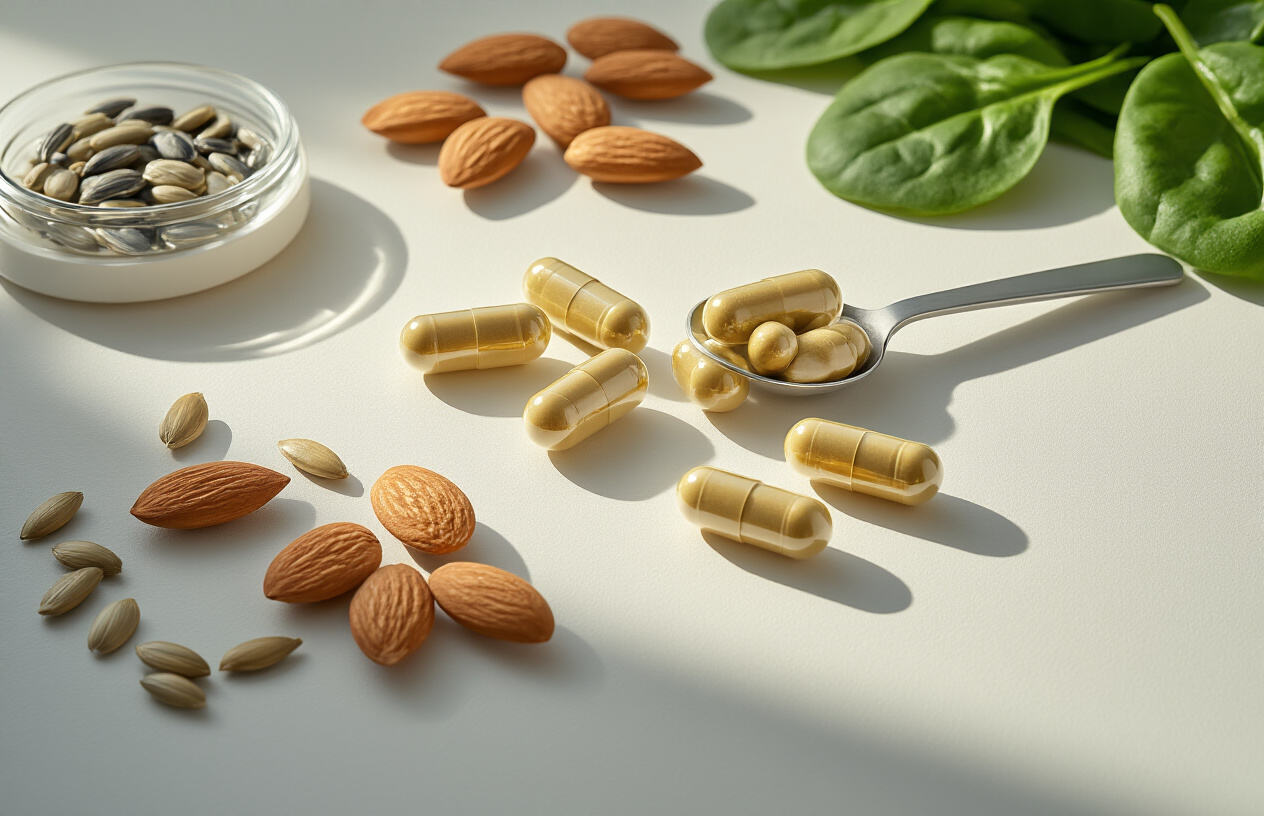
Recommended Daily Allowance for Different Age Groups
Getting the right amount of vitamin E varies significantly depending on your age and life stage. The National Institutes of Health has established specific recommendations to help you meet your body’s needs without going overboard.
| Age Group | Daily Vitamin E (mg α-TE) |
|---|---|
| Infants 0-6 months | 4 mg |
| Infants 7-12 months | 5 mg |
| Children 1-3 years | 6 mg |
| Children 4-8 years | 7 mg |
| Children 9-13 years | 11 mg |
| Adults 14+ years | 15 mg |
| Pregnant women | 15 mg |
| Breastfeeding women | 19 mg |
Adults need about 15 milligrams of alpha-tocopherol equivalent daily, which translates to roughly 22 international units (IU) of natural vitamin E or 33 IU of synthetic vitamin E. Breastfeeding mothers require the highest amount at 19 mg daily to support both their own needs and milk production.
Children’s requirements start low and gradually increase as they grow. Teens hit adult levels around age 14, reflecting their rapid growth and development during this crucial period.
Safe Upper Limits and Potential Overdose Risks
While vitamin E is fat-soluble and stored in your body, there’s still a ceiling on how much you should consume daily. The tolerable upper intake level sits at 1,000 mg (1,500 IU) of alpha-tocopherol per day for adults.
Exceeding this limit regularly can lead to several concerning side effects:
- Increased bleeding risk: High doses can interfere with vitamin K function and blood clotting
- Hemorrhagic stroke: Studies show elevated stroke risk with excessive supplementation
- Digestive issues: Nausea, diarrhea, and stomach cramping
- Fatigue and weakness: Ironically, too much of this energy-supporting vitamin can make you tired
- Headaches and blurred vision: Common symptoms of vitamin E toxicity
The risk becomes particularly serious if you’re taking blood-thinning medications like warfarin, as vitamin E can amplify their effects. Most cases of vitamin E toxicity come from high-dose supplements rather than food sources, since reaching toxic levels through diet alone is nearly impossible.
Factors Affecting Your Vitamin E Needs
Your individual vitamin E requirements aren’t set in stone. Several factors can bump up your daily needs beyond the standard recommendations.
Dietary fat intake plays a major role since vitamin E absorption depends on fat. People following very low-fat diets may need to pay extra attention to their vitamin E status, as poor fat absorption means poor vitamin E absorption.
Medical conditions can dramatically change your needs:
- Digestive disorders like Crohn’s disease or celiac disease reduce absorption
- Liver disease affects vitamin E storage and metabolism
- Premature infants often need higher amounts due to underdeveloped digestive systems
Lifestyle factors also matter. Smokers face increased oxidative stress, potentially requiring more antioxidant protection from vitamin E. People living in highly polluted areas or those exposed to environmental toxins may benefit from slightly higher intakes.
Polyunsaturated fat consumption creates an interesting relationship with vitamin E. The more polyunsaturated fats you eat (like those in vegetable oils and fish), the more vitamin E you need to protect them from oxidation. This is why many cooking oils are naturally high in vitamin E.
Age and gender influence requirements too. Older adults may need more due to decreased absorption efficiency, while women generally need the same amount as men except during pregnancy and breastfeeding.
Health Benefits of Adequate Vitamin E Consumption

Enhanced immune function and disease prevention
Vitamin E acts as your body’s shield against cellular damage, working behind the scenes to keep your immune system running smoothly. This powerful antioxidant protects white blood cells from oxidative stress, helping them function at peak performance when fighting off infections and diseases. When you have adequate vitamin E levels, your body produces more infection-fighting antibodies and maintains stronger natural killer cells that target harmful invaders.
Research shows that people with sufficient vitamin E intake experience fewer respiratory infections and recover faster from illness. The vitamin also supports the production of cytokines, which are chemical messengers that coordinate your immune response. As we age, our immune function naturally declines, but maintaining proper vitamin E levels can slow this process and keep your defenses strong well into your golden years.
Improved skin elasticity and wound healing
Your skin loves vitamin E, and for good reason. This nutrient works from the inside out to maintain skin health by protecting cell membranes from free radical damage that leads to premature aging. When applied topically or consumed through diet, vitamin E helps maintain collagen production, which keeps your skin firm and elastic.
The healing properties of vitamin E shine brightest when your body needs to repair damaged tissue. It speeds up wound healing by promoting new cell growth and reducing inflammation at injury sites. Many people notice their scars fade faster and their skin feels more supple when they maintain adequate vitamin E levels. The vitamin also helps protect your skin from UV damage, though it shouldn’t replace proper sun protection measures.
Better eye health and vision protection
Your eyes face constant exposure to light and oxygen, making them particularly vulnerable to oxidative damage. Vitamin E concentrates in eye tissues, providing crucial protection against age-related macular degeneration and cataracts. The vitamin works alongside other antioxidants like vitamin C and beta-carotene to form a protective network that preserves your vision.
Studies demonstrate that people with higher vitamin E intake have significantly lower rates of developing cataracts and experiencing vision loss as they age. The vitamin helps maintain the health of blood vessels in your eyes and protects the delicate retinal tissues from light-induced damage. Regular consumption of vitamin E-rich foods can be your eyes’ best defense against the natural wear and tear of daily life.
Reduced inflammation throughout the body
Chronic inflammation lurks behind many serious health conditions, from heart disease to arthritis. Vitamin E acts as a natural anti-inflammatory agent, helping to calm overactive inflammatory responses throughout your body. It inhibits the production of inflammatory compounds and helps regulate your immune system’s inflammatory pathways.
People with adequate vitamin E levels often experience less joint pain and stiffness, particularly those dealing with rheumatoid arthritis or other inflammatory conditions. The vitamin also supports cardiovascular health by reducing inflammation in blood vessels, which can help prevent the formation of dangerous plaques. Athletes and active individuals benefit from vitamin E’s anti-inflammatory properties, experiencing faster recovery times and less exercise-induced muscle damage.
Recognizing and Addressing Vitamin E Deficiency

Common symptoms of vitamin E deficiency
Vitamin E deficiency shows up in ways that many people don’t immediately connect to nutrition. The most noticeable signs often affect your muscles and nervous system. You might experience muscle weakness that makes everyday tasks feel harder than usual, or notice coordination problems that weren’t there before. Some people develop vision issues, particularly night blindness or trouble seeing in low light conditions.
Your immune system takes a hit too. You might find yourself getting sick more often or taking longer to recover from minor illnesses. Skin problems can also emerge – your skin might feel drier than normal or heal more slowly from cuts and scrapes. In severe cases, people experience numbness or tingling in their hands and feet, which happens because vitamin E deficiency damages the protective covering around nerves.
Children with vitamin E deficiency often show delayed growth or developmental issues. Adults might notice they bruise more easily or that small wounds take longer to heal. Some people also report feeling more tired than usual, even with adequate sleep.
The tricky part about these symptoms is that they develop gradually and can easily be mistaken for other health issues. Many people write off muscle weakness as getting older or attribute frequent infections to stress. That’s why paying attention to combinations of these symptoms matters more than focusing on just one sign.
Risk factors that increase deficiency likelihood
Several groups of people face higher risks of developing vitamin E deficiency. People with digestive disorders top this list because vitamin E needs fat to be absorbed properly. If you have conditions like Crohn’s disease, celiac disease, or cystic fibrosis, your body struggles to absorb this fat-soluble vitamin effectively.
Premature babies face significant risk since they’re born before building up adequate vitamin E stores. Their digestive systems aren’t fully developed, making absorption even more challenging. Adults who’ve had gastric bypass surgery or other procedures that affect fat absorption also need to watch their vitamin E levels closely.
Your diet plays a major role too. People following extremely low-fat diets might not get enough vitamin E, especially if they avoid nuts, seeds, and oils where this vitamin concentrates. Vegetarians and vegans aren’t automatically at higher risk, but they need to be more intentional about including vitamin E-rich plant foods.
Genetic factors can also increase risk. Some rare genetic disorders affect how your body processes or transports vitamin E. Additionally, people taking certain medications long-term, particularly some cholesterol-lowering drugs, might interfere with vitamin E absorption or metabolism.
Age matters as well. Older adults often eat less varied diets and may have digestive changes that affect nutrient absorption. People with liver disease also face increased risk since the liver plays a key role in vitamin E metabolism.
Effective treatment options and supplementation strategies
Treating vitamin E deficiency usually involves both dietary changes and targeted supplementation. The approach depends on how severe the deficiency is and what’s causing it in the first place.
For mild deficiencies, increasing vitamin E-rich foods often does the trick. Focus on adding more sunflower seeds, almonds, and vegetable oils to your meals. Wheat germ, spinach, and avocados also pack substantial amounts. The key is combining these foods with some healthy fats to boost absorption.
When dietary changes aren’t enough, supplements become necessary. Most doctors recommend starting with 100-400 IU daily, though people with absorption issues might need higher doses. Natural vitamin E (d-alpha-tocopherol) absorbs better than synthetic versions (dl-alpha-tocopherol), so check labels carefully.
Timing matters when taking supplements. Take vitamin E with meals that contain some fat – even a small amount helps absorption significantly. Avoid taking it with iron supplements at the same time, as they can interfere with each other.
People with serious absorption problems might need special forms of vitamin E. Water-soluble versions or specific tocopherol preparations can bypass some digestive issues. In severe cases, doctors sometimes recommend intramuscular injections, though this is rare.
Regular monitoring helps track progress. Blood tests can measure vitamin E levels and guide dosage adjustments. Most people see improvements in symptoms within a few weeks to months of consistent treatment, but nerve-related symptoms might take longer to resolve.
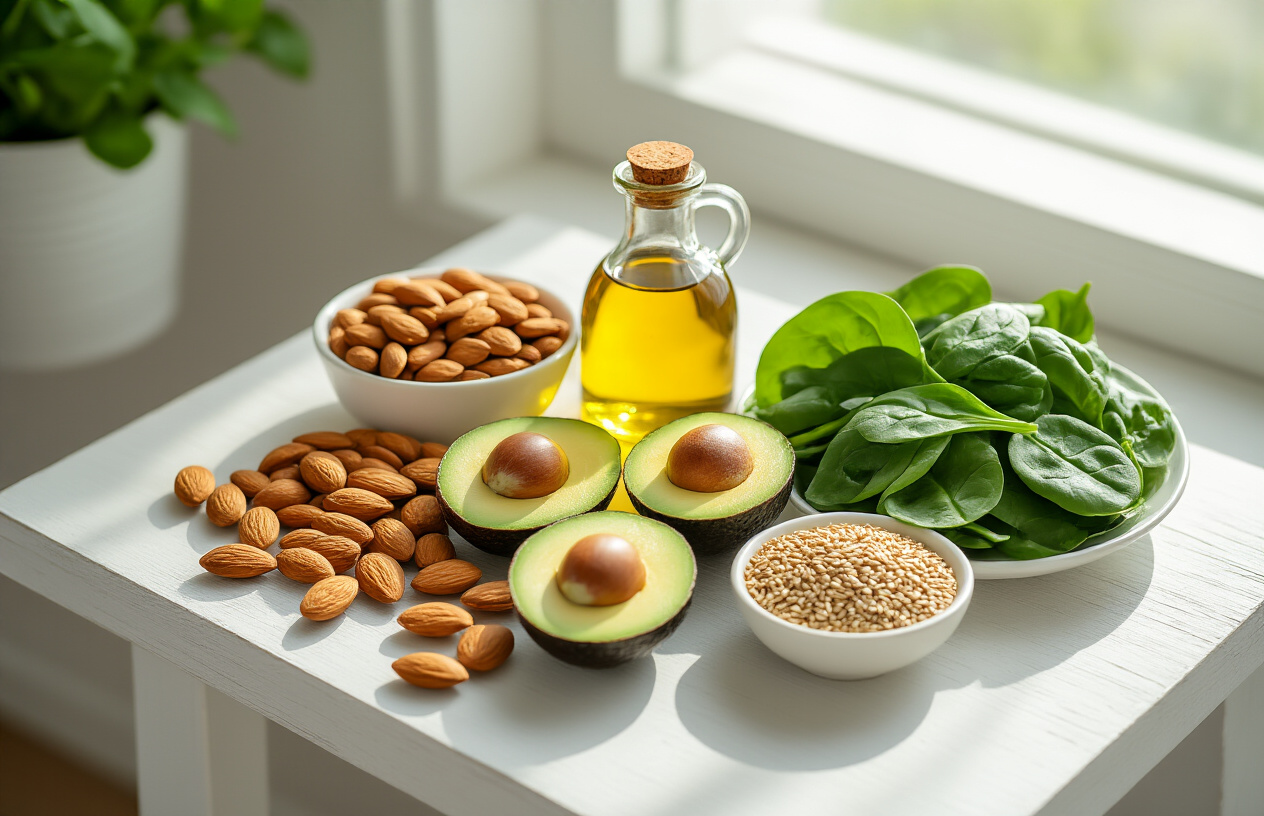
Getting enough vitamin E isn’t complicated, but it makes a real difference for your health. This powerful antioxidant protects your cells, supports your immune system, and keeps your skin looking healthy. You can easily meet your daily needs by eating foods like nuts, seeds, vegetable oils, and leafy greens rather than relying on supplements.
Pay attention to the signs your body gives you. If you’re dealing with muscle weakness, vision problems, or frequent infections, you might not be getting enough vitamin E. The good news is that most people can get all they need from a balanced diet. Start adding more vitamin E-rich foods to your meals today – your body will thank you for the extra protection and energy boost.




